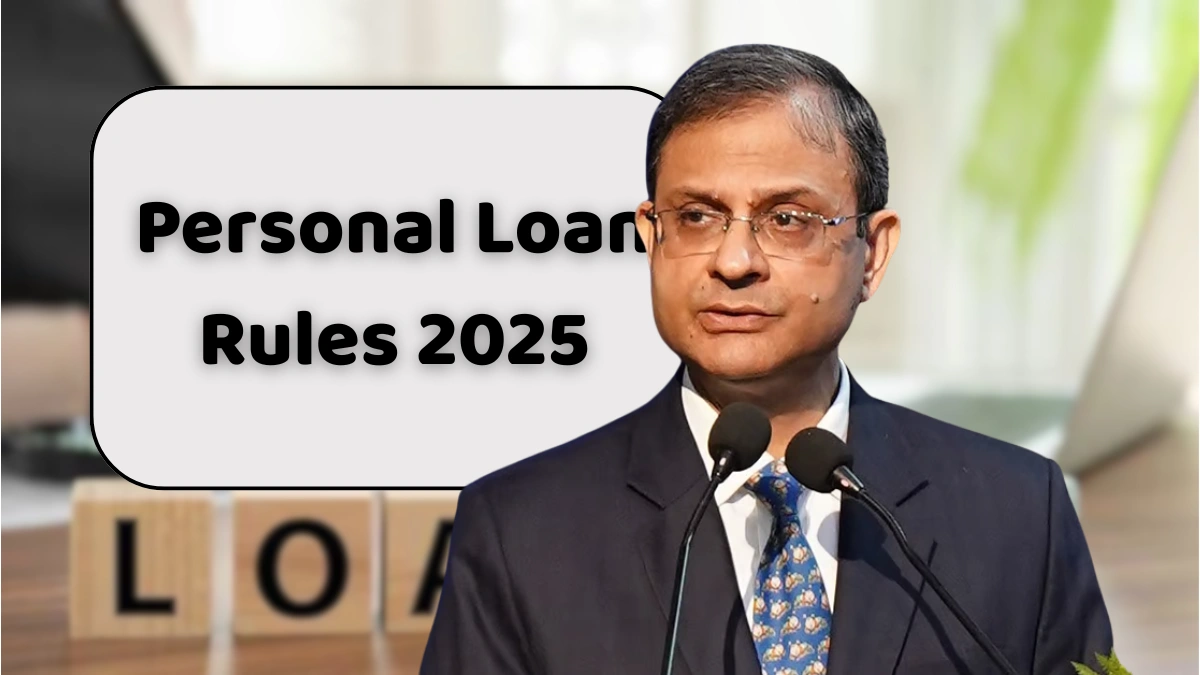Borrowers Must Know These New RBI Guidelines, Starting 2025, the Reserve Bank of India (RBI) and major commercial banks have introduced new personal loan rules that will directly impact millions of borrowers across the country.
From revised eligibility norms to dynamic interest rates, these updated guidelines aim to promote responsible lending, reduce defaults, and make the personal loan process more transparent for customers.
If you’re planning to take a loan in 2025, here’s everything you must know about the new personal loan regulations, interest rate changes, and eligibility requirements.
What Has Changed in 2025?
| Parameter | Old Rule | New Rule (2025) |
|---|---|---|
| Minimum Credit Score | 650 | 700 and above for unsecured loans |
| Interest Rate Range | 9% – 24% p.a. | 10% – 22% p.a. (based on risk profile) |
| Maximum Tenure | 5 years | Extended to 7 years |
| Prepayment Charges | 3% – 5% | Capped at 2% |
| Processing Fees | Up to 3% | Transparent Flat Fee System Introduced |
| Co-Applicant Option | Optional | Mandatory for Low-CIBIL Borrowers |
These reforms are designed to ensure fair lending practices, encourage credit discipline, and make borrowing safer and more affordable.
Interest Rate Reforms: Risk-Based Lending in Action
Under the Personal Loan Rules 2025, banks and NBFCs must now follow a risk-based lending model.
This means your credit score, income stability, and repayment history will play a key role in deciding your loan’s interest rate. Borrowers with high CIBIL scores (above 750) can now enjoy lower interest rates between 10% and 12%, while higher-risk borrowers may face up to 20–22%.
Additionally, RBI has instructed lenders to clearly disclose total cost of borrowing, including processing fees and insurance, before loan approval — ensuring zero hidden charges.
New Eligibility Criteria for Borrowers
The eligibility rules for personal loans in 2025 are now stricter, but fairer.
To qualify for a loan, applicants must meet the following conditions:
- Minimum age: 21 years
- Maximum age: 60 years (for salaried) / 65 years (for self-employed)
- Minimum income: ₹25,000/month (urban) or ₹15,000/month (rural)
- CIBIL score: Minimum 700
- Employment type: Salaried, government, or self-employed professional
- Work experience: Minimum 6 months in current organization
Banks will now rely heavily on digital KYC verification and AI-based credit scoring to speed up loan approvals while maintaining compliance.
RBI’s Focus: Transparency and Customer Protection
The RBI has tightened personal loan monitoring due to a sharp rise in unsecured retail lending over the past two years.
The central bank has mandated:
✅ Full transparency in interest rate disclosure.
✅ Credit discipline checks before loan disbursement.
✅ Monthly reporting of loan defaults to all credit bureaus.
✅ Stricter norms for pre-approved and instant digital loans.
These steps aim to protect borrowers from over-leverage and ensure that financial institutions lend responsibly.
Impact on Borrowers in 2025
| Category | Impact of New Rules |
|---|---|
| Salaried Professionals | Easier access with longer tenure and lower prepayment charges. |
| Low-CIBIL Borrowers | May face higher interest rates or require a co-applicant. |
| Digital Loan Users | Will see more transparent cost breakdowns and safer app-based lending. |
| Self-Employed Individuals | Eligible for flexible repayment up to 7 years. |
Overall, the new norms create a balanced lending ecosystem — fair to both borrowers and banks.
How to Improve Loan Eligibility in 2025
If your loan application is likely to be impacted by the new rules, here’s how to improve your chances:
- Maintain a CIBIL Score above 750 – Pay EMIs on time and avoid overutilizing credit cards.
- Reduce Existing Debts – Keep your debt-to-income ratio under 40%.
- Provide Income Proofs – Salaried employees should submit Form 16 and latest ITR.
- Opt for a Co-Applicant – Improves loan approval probability and lowers interest.
- Choose Longer Tenure Wisely – It reduces EMI pressure but may increase total interest.
Banks Expected to Benefit Too
The new guidelines also help banks and NBFCs by reducing loan defaults and improving credit quality.
By adopting risk-based pricing and strict verification, lenders can now offer competitive interest rates to genuine borrowers and limit exposure to risky segments.
Experts believe this move will stabilize the retail loan market and protect India’s banking sector from rising unsecured debt risks.
Safer, Smarter Borrowing in 2025
The Personal Loan Rules 2025 bring a much-needed balance between customer convenience and banking discipline. With more transparency, better eligibility checks, and fairer interest rates, borrowing has become more predictable and secure.
For borrowers with good credit behavior, 2025 could be the best time to take a personal loan, while those with poor repayment records must work on improving their credit profiles before applying.
Disclaimer: This article is based on RBI circulars, banking reports, and financial updates as of 2025. Readers are advised to confirm details with their respective banks or NBFCs before applying for a loan.






